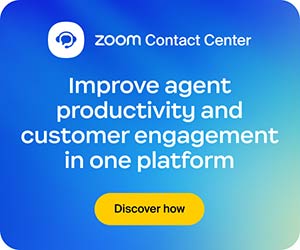Is your current scheduling process having a negative impact on agents and customers alike? Then perhaps it’s time for an overhaul!
To give you some fresh ideas and inspiration, we asked our expert panel for their latest tips, tools, and techniques for contact centre scheduling.
Here’s what they said…
1. Hire Part-Timers to Make It Easier to Cover Peak Hours
Optimized scheduling only works if employees are prepared to work the shifts that efficiently cover customer demand.
Don’t make the mistake of assuming that everyone wants to work Monday to Friday 9 to 5. Some people relish working evenings and weekends – students, for example. Ask your employees about their preferred working hours and take this into account when building schedules.
Ideally, all your employees would have flexible contracts that permit a fixed number of hours to be distributed over the week according to demand. In reality, you can get close to optimized schedules if a subset of your employees works like this.
Part-timers make it easier to cover peak hours. It’s good practice to have 25% of the workforce working part-time shifts.
A good workforce management system will automatically produce optimized schedules that use the available flexibility to best effect, while ensuring compliance with employment contracts and labour laws.
Contributed by: Chris Dealy, WFM Evangelist, injixo
2. Allow Agents to Move Their Own Breaks and Lunches

The flexibility of modern workforce optimization systems means you can schedule the right number of reserve staff in advance to match call demand and factor in sickness and training accurately.
The ability to access schedules, anytime, anywhere means agents can log in from home and let their manager know when they are available for work.
This enables managers and resource teams to build efficient schedules and gain complete control of their contact centre operations in a highly flexible way.
Additionally, intraday scheduling allows managers to make small changes during the day, taking into account unplanned changes in customer demand and agent absences.
For instance, managers can easily change breaks or move people between groups or different areas of the office.
The really big improvement comes when the contact centre gives self-scheduling to agents, allowing them to move breaks and lunches, add extra time or take time off. All controlled by automated business rules set by the resource planner.
Contributed by: Magnus Geverts, VP Product Marketing, Calabrio
3. Tweak Schedules ‘On the Fly’ Based on Live Data

Real-time monitoring and intraday adjustments are key. These allow managers to tweak schedules on the fly based on live data, ensuring the workforce is optimally distributed throughout the day.
This not only boosts agent satisfaction by evening out busy periods, but also maintains performance and improves CX.
Next, employ advanced reporting tools to enhance these strategies with deep dives into performance metrics and operational efficiency. These insights highlight areas needing attention and inform smarter decision-making.
Contributed by: Mark Ligi, Director of Product Management CCaaS/VCaaS, Enghouse Interactive
4. Try Rotating Patterns to Share the Pain of Early and Late Work Across the Entire Team
Scheduling is about having the right number of people with the right skills in their seats at the right time to handle demand.
The most basic form of scheduling is fixed shifts, where each agent works the same hours every day. That enables predictable working times, but it’s not aligned with customer demand.
A slightly better solution is rotating patterns. For example: week one early, week two middle of the day, week three late, then repeat. That shares the pain of early and late work across the entire team.
With some ingenuity, you can create fixed shifts and rotating patterns using spreadsheets. You can even calculate under- and overstaffing.
The most efficient schedules carefully optimize start times, finish times, and break times to minimize under- and overstaffing, making the best use of staff on flexible contracts that allow different shifts on different days. Realistically, that’s only possible with a good workforce management system.
Contributed by: Chris Dealy, WFM Evangelist, injixo
5. Stop Trying to Treat Digital Interactions in the Same Way as Voice

With the advent of digital, it has become more difficult than ever for workforce managers to schedule their staff effectively. Digital interactions are very different from voice interactions.
They can start and stop intermittently, and employees can manage multiple digital interactions simultaneously. Managers are overcoming the scheduling complexity with advanced analytics and AI.
Now, workforce managers can take digital interactions into account and schedule and forecast around their unique demands.
Managers can increase forecast accuracy by calculating the exact actual time invested in handling a digital interaction based on when the activity occurred.
Additionally, it’s now possible to plan for asynchronous interactions. This is necessary as digital interactions can span multiple intervals or days.
By being able to take digital interactions into account, organizations can bring their workforce engagement management into the digital age and be more efficient than ever.
Contributed by: Andrea Matsuda, Manager, Product Marketing, NICE
6. Build Schedules Down to 15-Minute Intervals
To build schedules that match the supply of staff with customer demand, you need to know how many staff you will need across the period for which you want to build schedules, typically down to 15-minute intervals.
You need to convert the volume and AHT from the forecast into a headcount. For inbound phone calls, Erlang C is the proven method.
It calculates the number of staff required to deliver a given service level (e.g. 80% of calls answered within 20 seconds), with a given volume of calls and a given AHT.
Linear calculations can be used for non-abandoning contact such as emails. Good workforce management systems come with a suite of calculation methods to handle all the different contact channels.
No matter how you calculate staffing, don’t forget to add a safety margin to account for shrinkage and occupancy, otherwise you’ll always be understaffed.
7. Constantly Strive to Improve Schedule Efficiency

‘Schedule efficiency’ measures how accurately and consistently the number of scheduled employees matches the required staffing.
Discrepancies between the scheduled and required figures should be measured in 15- or 30-minute intervals and summarized on a weekly or monthly basis to produce a score.
Schedule efficiency is one of the most important metrics in the planning process. Bad schedule efficiency indicates poor customer experience, agent burnout, excessive costs, or all three.
In reality, reaching 100% efficiency is impossible. But it’s vital to measure schedule efficiency and constantly strive to improve it.
Of course, as the day approaches, the forecast may prove to be inaccurate and you will lose staff due to shrinkage effects, such as sickness. (This is where we enter the realm of real-time management – and that’s a separate topic.)
Contributed by: Chris Dealy, WFM Evangelist, injixo
Watch the video below where Richard Saqladi, Regional Sales Director at InVision Group (injixo), explains the importance of constantly monitoring and improving your schedule efficiency:
8. Utilize Gamification to Incentivize Schedule Management

Introducing gamification into the scheduling process can transform it into a more engaging and motivating experience for agents.
By implementing a points-based system, where agents earn rewards for achieving scheduling-related goals, such as completing tasks, or adhering to schedules, organizations can incentivize proactive schedule management.
Agents can earn points that can be redeemed for rewards like preferred shift choices, additional time off, or other incentives, creating a sense of accomplishment and recognition.
Gamification not only makes scheduling more interactive, and enjoyable, but also encourages agents to actively participate in optimizing workforce management practices, ultimately contributing to improved operational outcomes.
Contributed by: Victoria Piazza, Marketing Manager, MiaRec
For more great insights and advice from our panel of experts, read these articles next:
- 10 Changes Set to Redefine the Future of Self-Service
- How to Stop Call Transfers Ruining Your CX
- 10 Ways to Kick-Start Your Adherence Improvement Strategy
Author: Robyn Coppell
Reviewed by: Xander Freeman
Published On: 29th Jul 2024
Read more about - Workforce Planning, Andrea Matsuda, Calabrio, Chris Dealy, Enghouse Interactive, Magnus Geverts, Mark Ligi, MiaRec, NICE, Peopleware, Recruitment, Scheduling, Shift Patterns, Staffing, Top Story, Victoria Piazza







































